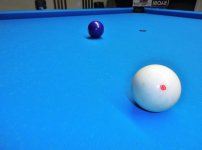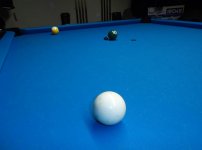I recently came across an old thread by Grey Ghost, on shadow aiming. He mentioned an update, but I must have missed it.
http://forums.azbilliards.com/showthread.php?t=201526
I can use it on my table with two 8 foot fluorescent bulbs. There aren't many shadows, but once you dial in on what part of them to hit according to distance and cut angle, it's fairly accurate.
I suppose with each table being set up differently as far as light positioning, with a few adjustments a player could use this technique to pocket balls. Especially on those nights where automatic never happens. :grin-square:
Best,
Mike
http://forums.azbilliards.com/showthread.php?t=201526
I can use it on my table with two 8 foot fluorescent bulbs. There aren't many shadows, but once you dial in on what part of them to hit according to distance and cut angle, it's fairly accurate.
I suppose with each table being set up differently as far as light positioning, with a few adjustments a player could use this technique to pocket balls. Especially on those nights where automatic never happens. :grin-square:
Best,
Mike




